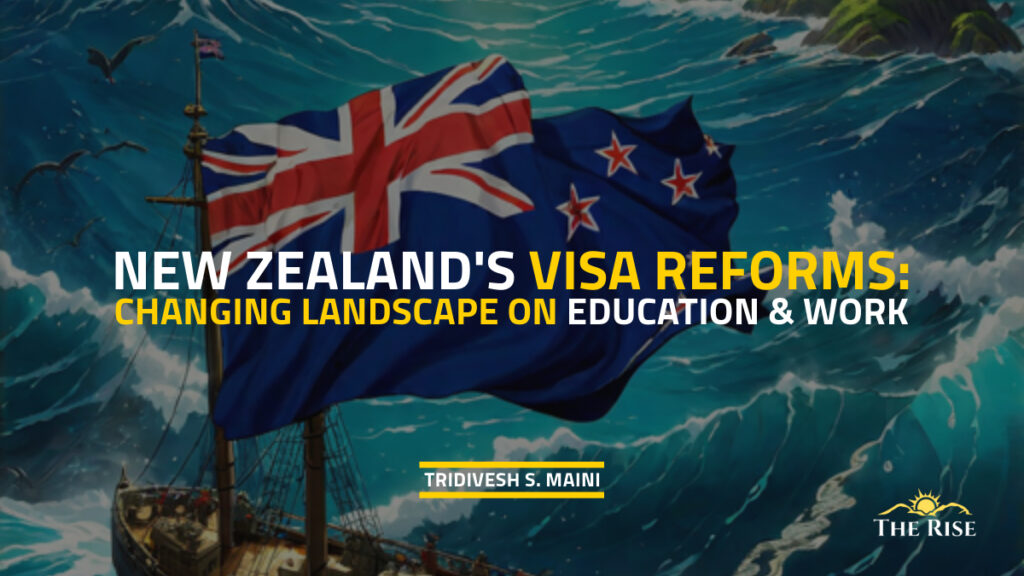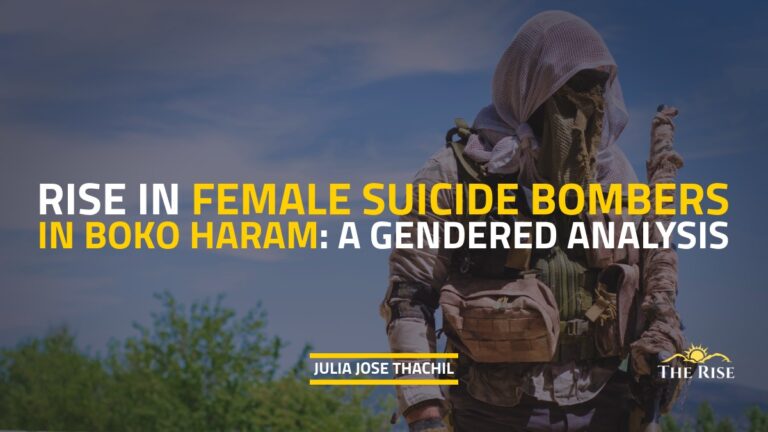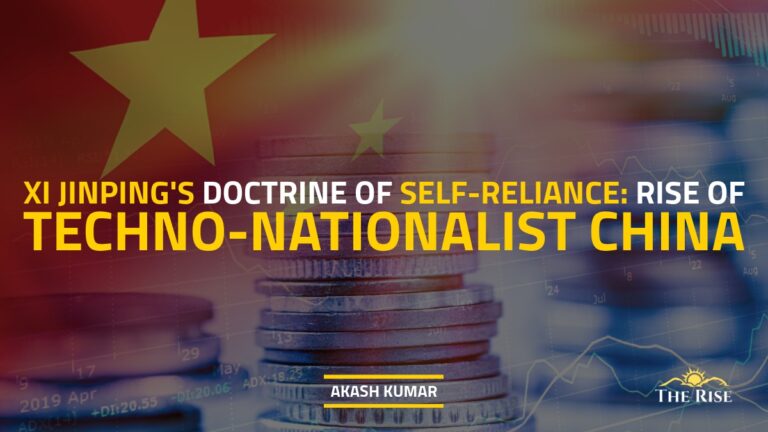While in the past, several Anglo-Saxon countries were the drivers of ‘globalisation’ and ‘open borders’, this is beginning to change with many Asian countries as well as Middle Eastern countries focusing on attracting talent to give their long-term economic objectives a push. Indian students and professionals keen to study or work abroad need to closely follow both the new opportunities and challenges arising out of the changes in immigration to certain countries as well as the changing landscape of international higher education. It is also important to pay closer attention to key geopolitical developments since there is a growing link between geopolitics and immigration as well as the higher education sphere.
The latest country to take note of the rising numbers of immigrants is New Zealand. One of the important steps it has taken to check rising immigration numbers is significant revisions to the Accredited Employer Work Visa (AEWV) program – the country’s temporary work visa program – raising the requirements for foreigners to qualify for jobs.
Important changes to the AEWV Program
Some of the key changes introduced to New Zealand’s AEWV are the introduction of basic English language requirements for low-skilled jobs apart from minimum work experience and skills criteria for work visas. Significantly, the duration of stay for work visas has been reduced from five years to three years.
The key propelling factor for this decision was the fact that 173,000 new non-New Zealand citizens took residency in 2023. On the other hand, several New Zealanders moved out of the country. Said Immigration Minister, Erica Stanford while commenting on the New Zealand government’s recent decision: “We had to make some changes now because we’ve got high migrant exploitation and unsustainable numbers coming into the country,”
Earlier this year, several countries like Australia, UK, Canada and France have taken steps to curb immigration, by introducing significant changes to the existing student visa policies, intending to reduce the intake of international students.
Also Read: Ivy Academia Under Scanner for Anti-semitism
Due to the changes introduced to the existing student visa policies by Australia, Canada and UK many international students are beginning to think afresh about international higher education opportunities.
Due to the education facilities as well as employment opportunities, these countries have been preferred destinations for students from developing countries — especially from India. It would be pertinent to point out, that it is not just international students who benefit from the education facilities and opportunities, but the economies of these countries as well benefit from exorbitant international student fees – not to mention the skills and talent which many of these students possess, as a result of which several individuals and agencies in these countries have been critical of the attempts of these countries to reduce the intake of international students. Due to the changes introduced to the existing student visa policies by Australia, Canada and UK many international students are beginning to think afresh about international higher education opportunities.
Opportunities in non-Western countries
With several non-Western countries like UAE, Taiwan, South Korea and Japan seeking to attract students as well as skilled professionals, students may explore opportunities in these countries. While the UAE has introduced long-term visas for professionals and students, Japan, South Korea, and Taiwan too have been seeking to attract both non-skilled labour as well as professionals. Japan introduced a category designated as ‘highly skilled professionals”. In 2023, Taiwan announced that it would seek to attract 4,00,000 skilled workers by 2030 for its hi-tech industry. Taiwan had also set a target for attracting professionals – dubbed as “innovators” – and international students. In 2023, Taipei also announced its plan to spend more on attracting international students – especially South East Asian nations – to study STEM-related subjects.
Japan, South Korea and Taiwan are all facing the challenge of an ageing population and dip in birth rates and it is due to the labour shortages arising out of the same that they are all seeking to attract students and workers.
Also Read: Internationalization of Indian Higher Education
Taiwan can be especially attractive for several students, given that it is seeking to attract talented professionals for its semiconductor industry. It has already started a program the International Industrial Talents Education Special Program (INTENSE) whereby students receive a two-year scholarship for studying Engineering and Semiconductors. Apart from formal degrees, students will also receive training in accordance with the needs of businesses. Currently, the INTENSE program is restricted to three ASEAN nations – Vietnam, Indonesia and the Philippines. Soon it is likely that Taiwan will try and attract international students from other countries as well.
It would be pertinent to point out that Japan, South Korea and Taiwan are all facing the challenge of an ageing population and dip in birth rates and it is due to the labour shortages arising out of the same that they are all seeking to attract students and workers.
Nomad Visas: Opportunities for professionals
Apart from the above changes in international higher education and migration, the other opportunity which professionals, from several countries, can tap into abroad is ‘Nomad Visas’ – referred to as remote work visas, freelance visa, a digital nomad visa — which provide professionals the opportunity to work by remote for companies based in any country, while residing in another country. (Italy is the latest country to have introduced this type of visa). There are restrictions to the Nomad visa like the type of work which can be done while being on a nomad visa, minimum pay and time which can be spent in a country on a digital nomad visa but it does provide significant opportunities to professionals seeking to spend time overseas for professional reasons or to experience the lifestyle overseas.
Indian students and professionals keen to study or work abroad need to closely follow both the new opportunities and challenges arising out of the changes in immigration to certain countries as well as the changing landscape of international higher education.
You May Like: The Future of India’s Future: Increasing Global Education Opportunities for Indian Students
It is important for students and professionals from the developing world – especially India — to adapt to the changing global economy, where several countries like Canada, the UK and Australia, popular destinations for education and immigration, are changing their approach vis-à-vis immigration, while others like UAE, Saudi Arabia, Korea and Japan are trying to attract more international students as well as professionals to achieve their long-term economic objectives.
In conclusion, if Western nations and Australia and New Zealand continue to make revisions to their student and work visas, international students (especially from developing countries) will begin to look at alternatives. While in the past, several Anglo-Saxon countries were the drivers of ‘globalisation’ and ‘open borders’, this is beginning to change with many Asian countries as well as Middle Eastern countries focusing on attracting talent to give their long-term economic objectives a push. As mentioned earlier, Indian students and professionals keen to study or work abroad need to closely follow both the new opportunities and challenges arising out of the changes in immigration to certain countries as well as the changing landscape of international higher education. A straitjacketed approach vis-à-vis career paths and higher education is not possible with the global disruptions taking place – especially with the increasing emphasis on innovation and technology. It is also important to pay closer attention to key geopolitical developments since there is a growing link between geopolitics and immigration as well as the higher education sphere.
Disclaimer: The views expressed in this article are of the author solely. TheRise.co.in neither endorses nor is responsible for them. Reproducing this content without permission is prohibited.
About the author
Tridivesh Singh Maini is a New Delhi-based Policy Analyst. He is faculty member of OP Jindal Global University, Sonepat, Haryana.











Pingback: The Immigration Crossroads in a Trumpist World: Restrictionism - TheRise.co.in
Pingback: American Dream in Doldrums: Scrapping Post-Study Work Program to Dent US Universities? - TheRise.co.in